What is the purpose of a predefined template on the FortiAnalyzer?
How do you restrict an administrator’s access to a subset of your organization’s ADOMs?
FortiAnalyzer uses the Optimized Fabric Transfer Protocok (OFTP) over SSL for what purpose?
Which item must you configure on FortiAnalyzer to email generated reports automatically?
Which two statements are true about FortiAnalyzer log forwarding modes? (Choose two.)
Which two settings must you configure on FortiAnalyzer to allow non-local administrators to authenticate to FortiAnalyzer with any user account in a single LDAP group? (Choose two.)
What can the CLI command # diagnose test application oftpd 3 help you to determine?
Refer to the exhibit.
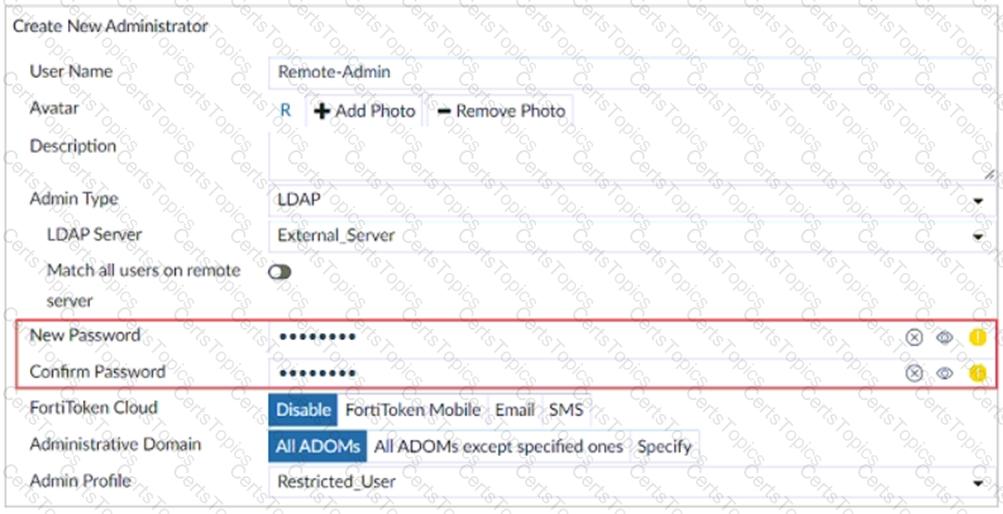
The exhibit shows the creation of a new administrator on FortiAnalyzer. The new account uses the credentials stored on an LDAP server.
Why would an administrator configure a password for this account?
Consider the CLI command:

What is the purpose of the command?
Which SQL query is in the correct order to query the database in the FortiAnslyzer?
When you perform a system backup, what does the backup configuration contain? (Choose two.)
An administrator has configured the following settings:
config system fortiview settings
set resolve-ip enable
end
What is the significance of executing this command?
What is required to authorize a FortiGate on FortiAnalyzer using Fabric authorization?
Which two statements about deleting ADOMs are true? (Choose two.)
What statements are true regarding FortiAnalyzer 's treatment of high availability (HA) dusters? (Choose two)
Which two actions should an administrator take to view Compromised Hosts on FortiAnalyzer? (Choose two.)
Which two elements are contained in a system backup created on FortiAnalyzer? (Choose two.)
Which log will generate an event with the status Contained?
Logs are being deleted from one of your ADOMs earlier that the configured setting for archiving in your data policy. What is the most likely problem?
What are analytics logs on FortiAnalyzer?
What is the main purpose of using an NTP server on FortiAnalyzer and all of its registered devices?
After you have moved a registered logging device out of one ADOM and into a new ADOM, what is the
purpose of running the following CLI command?
execute sql-local rebuild-adom
If the primary FortiAnalyzer in an HA cluster fails, how is the new primary elected?
What are two effects of enabling auto-cache in a FortiAnalyzer report? (Choose two.)
Which process is responsible for enforcing the log file size?
You are trying to initiate an authorization request from FortiGate to FortiAnalyzer, but the Security Fabric window does not open when you click Authorize.
Which two reasons can cause this to happen? (Choose two.)
Refer to the exhibit.
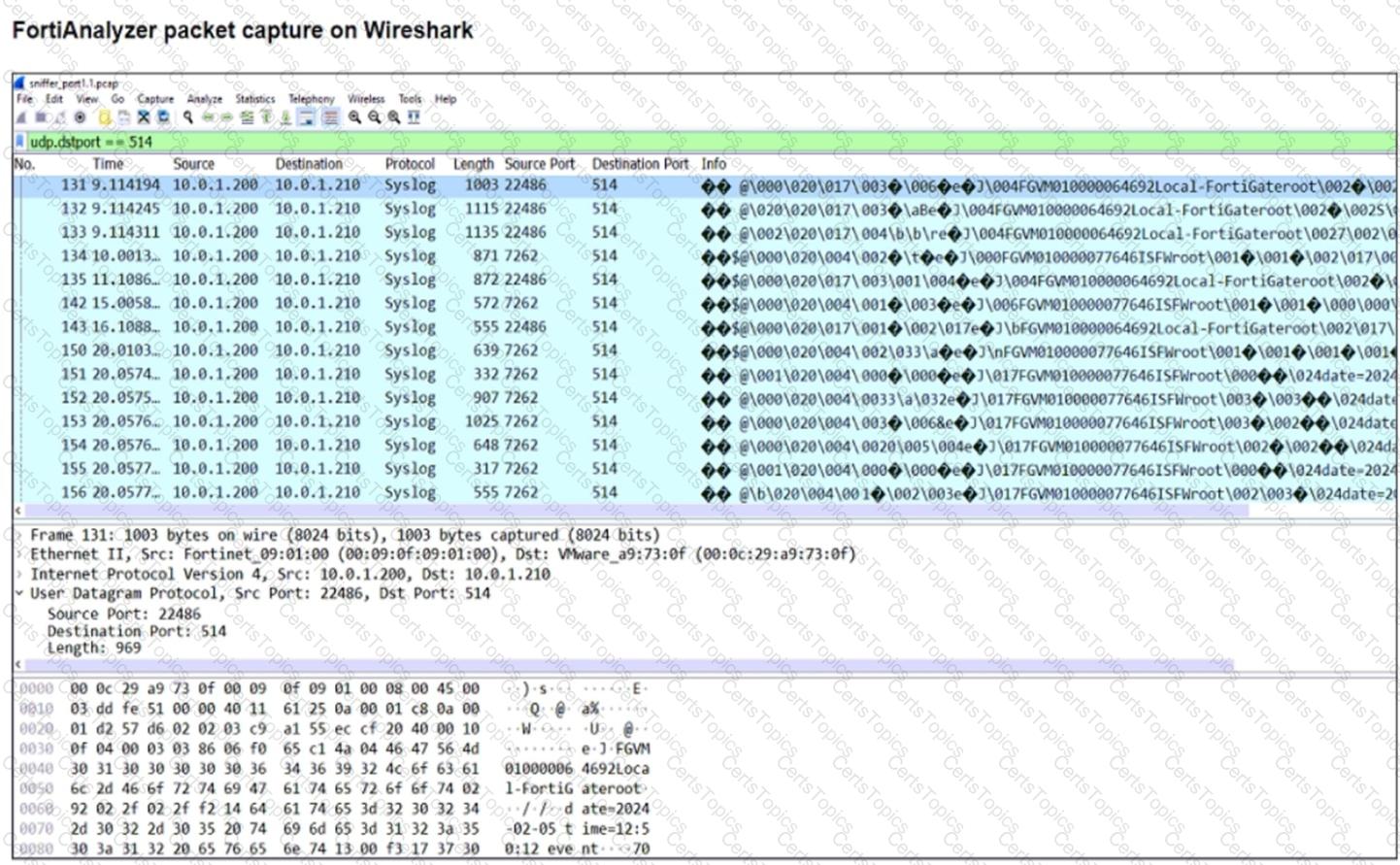
The capture displayed was taken on a FortiAnalyzer.
Why is a single IP address shown as the source for all logs received?
What happens when a log file saved on FortiAnalyzer disks reaches the size specified in the device log
settings?
Refer to the exhibit.
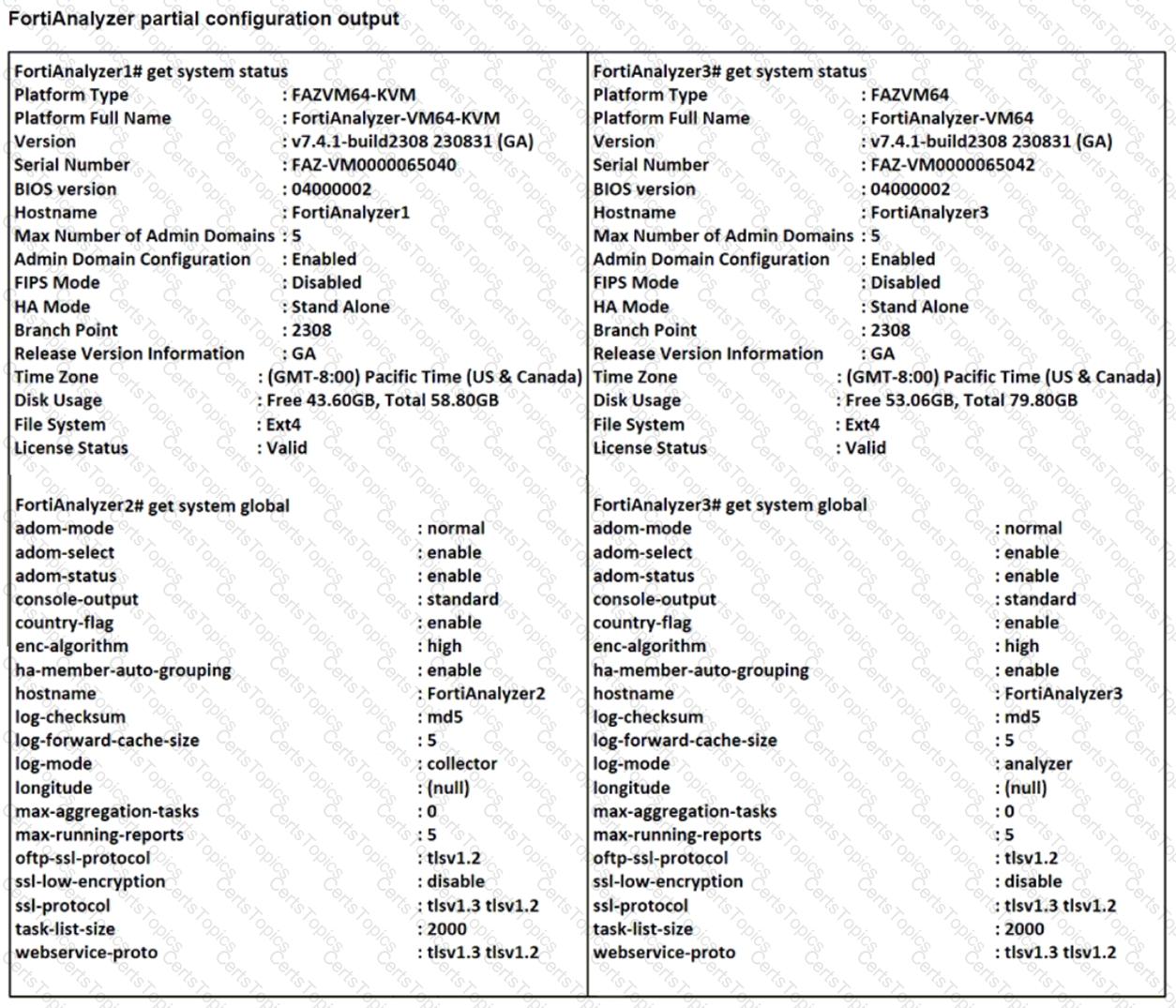
Based on the partial outputs displayed, which devices can be members of a FortiAnalyzer Fabric?
Which statement describes online logs on FortiAnalyzer?
What is the recommended method of expanding disk space on a FortiAnalyzer VM?
Which two statement are true regardless initial Logs sync and Log Data Sync for Ha on FortiAnalyzer?
A playbook contains five tasks in total. An administrator runs the playbook and four out of five tasks finish successfully, but one task fails. What will be the status of the playbook after it is run?
What are two of the key features of FortiAnalyzer? (Choose two.)
Refer to the exhibit.
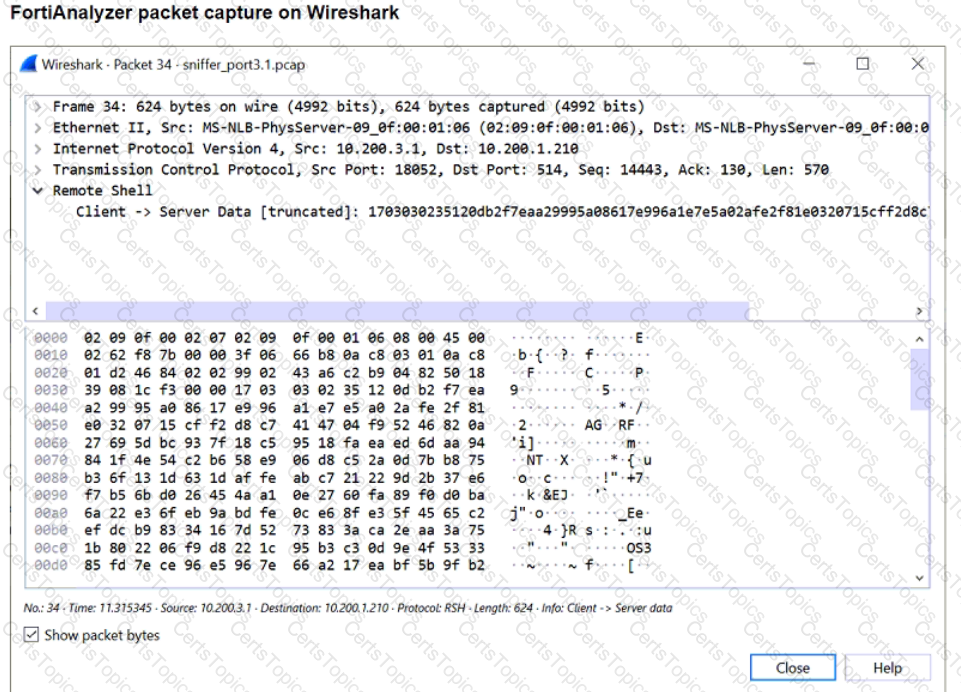
Which image corresponds to the packet capture shown in the exhibit?
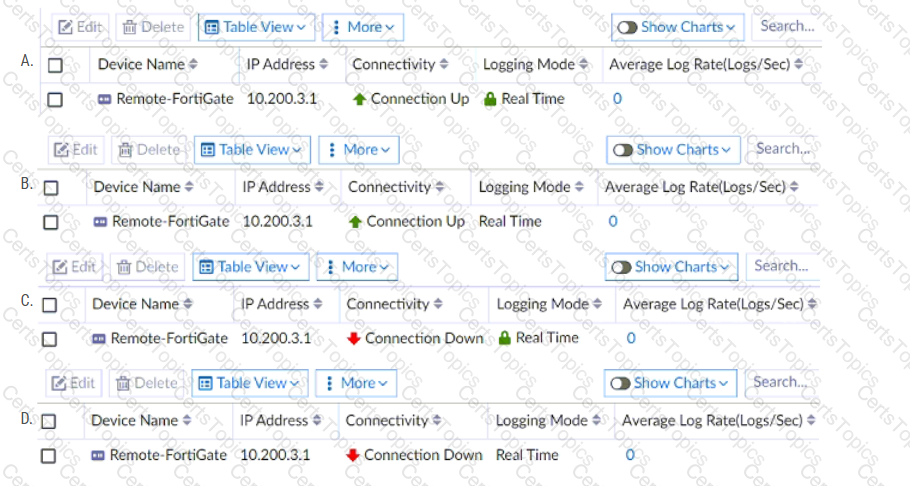
Which statements are true regarding securing communications between FortiAnalyzer and FortiGate with SSL? (Choose two.)
What FortiGate process caches logs when FortiAnalyzer is not reachable?
You’ve moved a registered logging device out of one ADOM and into a new ADOM. What happens when you rebuild the new ADOM database?
Which two methods can you use to restrict administrative access on FortiAnalyzer? (Choose two.)
Which statement is true regarding Macros on FortiAnalyzer?
What purposes does the auto-cache setting on reports serve? (Choose two.)
Which statement about the FortiSOAR management extension is correct?
What FortiView tool can you use to automatically build a dataset and chart based on a filtered search result?
What are analytics logs on FortiAnalyzer?
View the exhibit:

What does the 1000MB maximum for disk utilization refer to?
What must you consider when using log fetching? (Choose two.)
Refer to the exhibit, which shows the HA configuration settings of a FortiAnalyzer device.
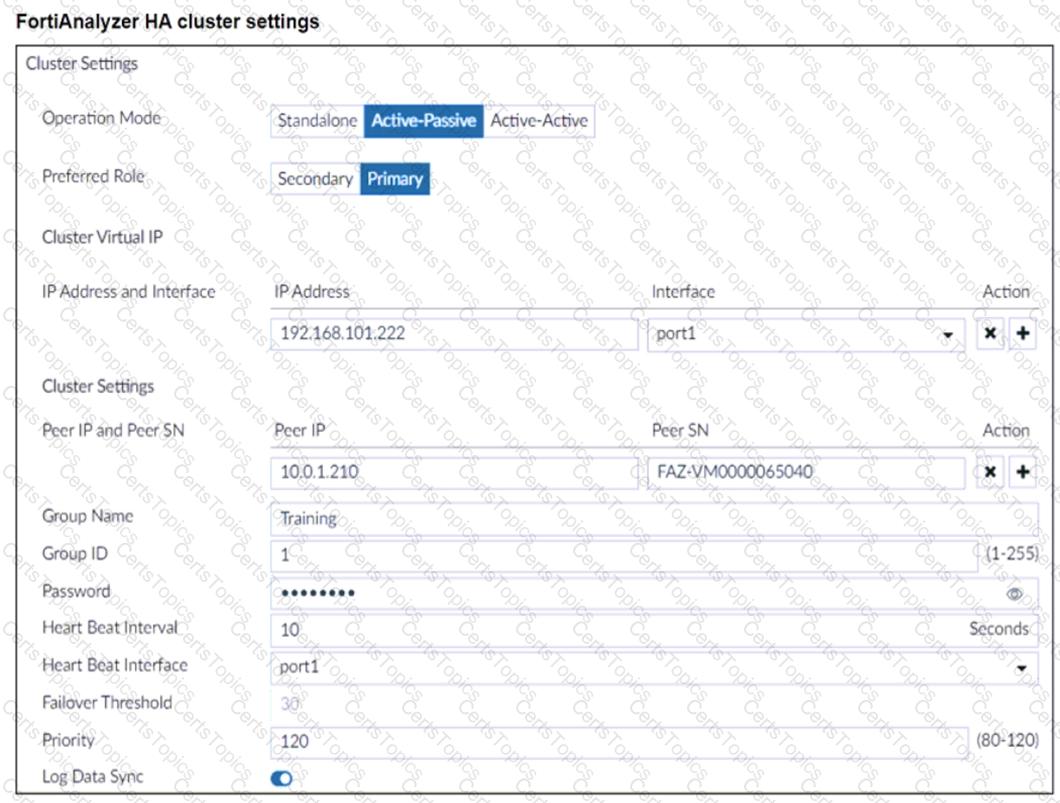
The administrator wants to join this FortiAnalyzer to an existing HA cluster. What can you conclude from the configuration displayed?
A rogue administrator was accessing FortiAnalyzer without permission, and you are tasked to see what activity was performed by that rogue administrator on FortiAnalyzer.
What can you do on FortiAnalyzer to accomplish this?
Refer to the exhibit.
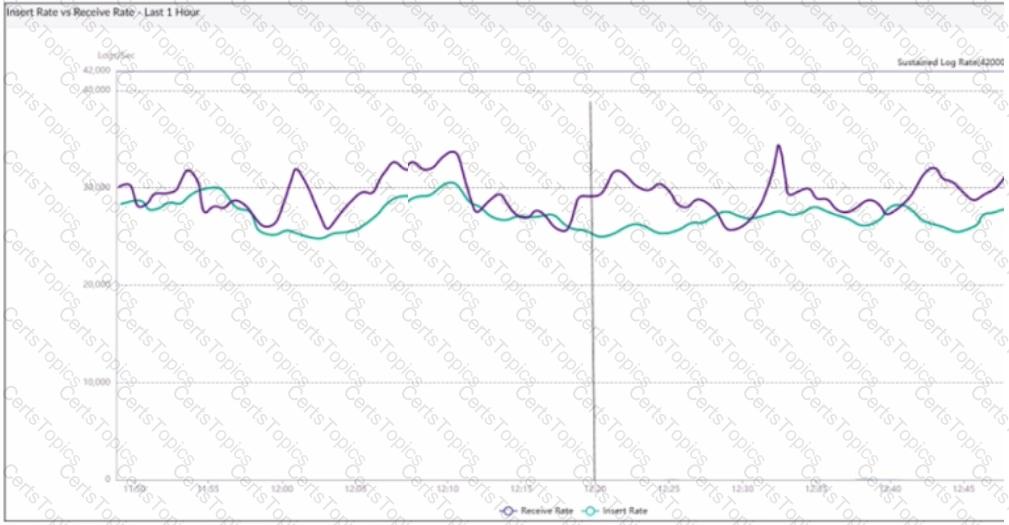
What does the data point at 12:20 indicate?
Which daemon is responsible for enforcing raw log file size?
Which two statements express the advantages of grouping similar reports? (Choose two.)
What is the purpose of output variables?